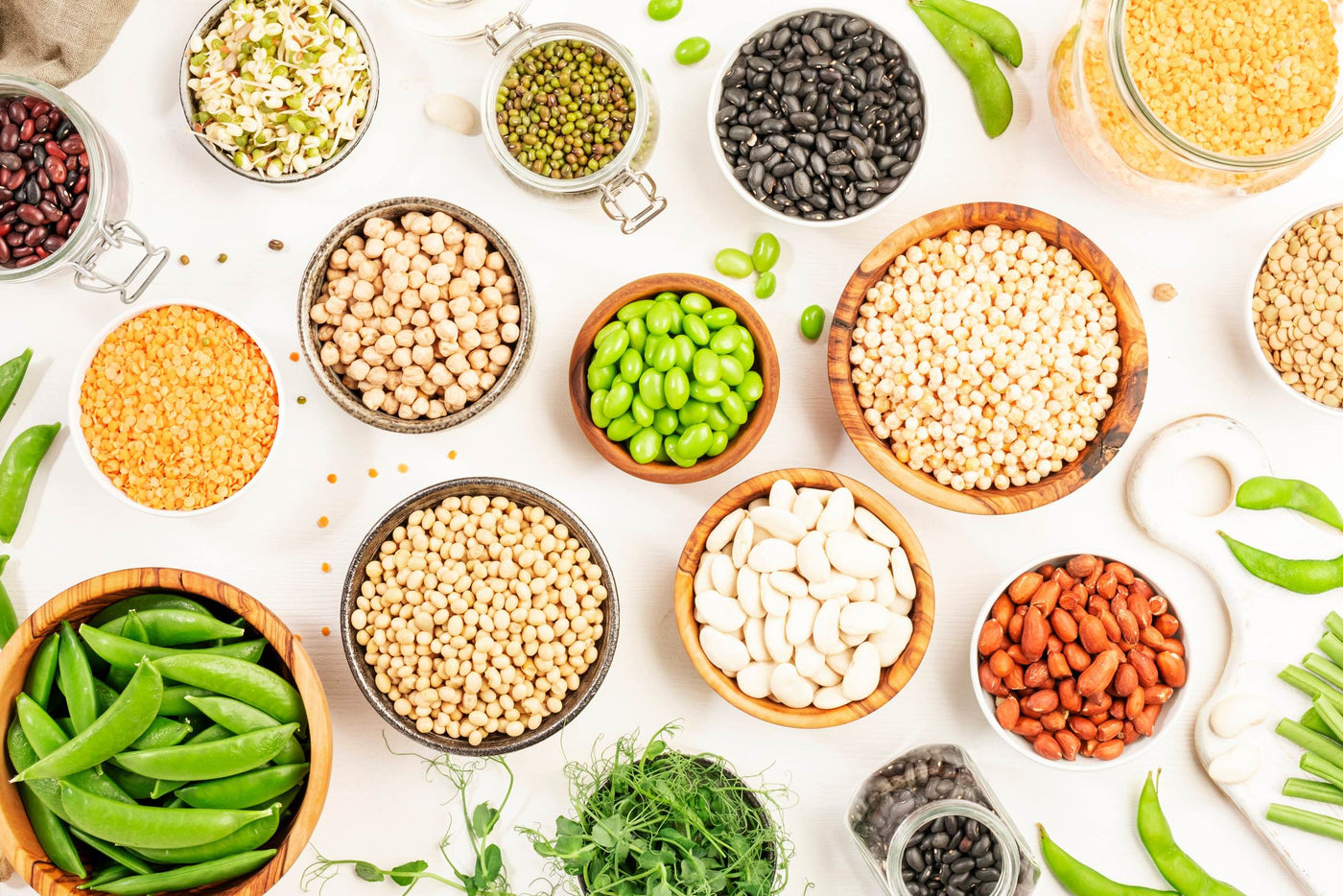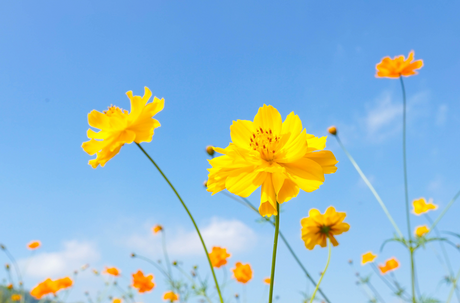Violet is an Asiatic type hard neck. Bulbs are white colored with purple streaks. It produces big bulbs with 10-12 large cloves. Flavor tends to be slightly spicy.
Strawberry Roots & Bundles - Seascape (pre-order)
From $199 USDUnit price /UnavailableDescription
This item begins shipping in March.
Quick Overview
• Ever-bearing
• Produces Large Fruits
IMPORTANT: Once they arrive, remoisten the roots. You'll do this by rinsing and dumping all of the water from the bag several times. Once you've done that, leave a small amount of water inside and then place the whole bag (and the contents) inside of a windowsill. Rinse and drain your bare roots at least once a day until new green growth appears and you're ready to plant outdoors.
These are bare root strawberries. Plant these in the spring; in a place that gets full sun. They do best if you plant immediately after receiving them. Space plants 18" apart in rows 3' apart. These can also be planted in pots. Before planting, soak the roots for 2 hours to re-hydrate the plant. Plant with root side down and dig deep enough so the root is stretched downward; you do not want the root to be balled up.
Details
NEW, everbearing strawberry that produces July until frost. Very large berries with excellent fruit flavor. Good runner production. Tolerant to Leaf Spot and resistant to Powdery Mildew.Strawberry Roots & Bundles - San Andreas (pre-order)
From $199 USDUnit price /UnavailableDescription
This item begins shipping in March.
Quick Overview
This Monterey varety is the old-time favorite. It is an ever-bearing variety that has a spring and fall crop. Large plants make few runners and large, wedge shaped, firm berries. Excellent for fresh eating and dessert.
IMPORTANT: Once they arrive, remoisten the roots. You'll do this by rinsing and dumping all of the water from the bag several times. Once you've done that, leave a small amount of water inside and then place the whole bag (and the contents) inside of a windowsill. Rinse and drain your bare roots at least once a day until new green growth appears and you're ready to plant outdoors.
These are bare root strawberries. Plant these in the spring; in a place that gets full sun. They do best if you plant immediately after receiving them. Space plants 18" apart in rows 3' apart. These can also be planted in pots. Before planting, soak the roots for 2 hours to re-hydrate the plant. Plant with root side down and dig deep enough so the root is stretched downward; you do not want the root to be balled up.
Details
This varety is the old-time favorite. It is an ever-bearing variety that has a spring and fall crop. Large plants make few runners and large, wedge shaped, firm berries. Excellent for fresh eating and dessert.Strawberry Roots & Bundles - Jewel (pre-order)
From $199 USDUnit price /UnavailableDescription
This item begin shipping in March.
Quick Overview
• June Bearing
• Produces Large Fruits
IMPORTANT: Once they arrive, remoisten the roots. You'll do this by rinsing and dumping all of the water from the bag several times. Once you've done that, leave a small amount of water inside and then place the whole bag (and the contents) inside of a windowsill. Rinse and drain your bare roots at least once a day until new green growth appears and you're ready to plant outdoors.
These are bare root strawberries. Plant these in the spring; in a place that gets full sun. They do best if you plant immediately after receiving them. Space plants 18" apart in rows 3' apart. These can also be planted in pots. Before planting, soak the roots for 2 hours to re-hydrate the plant. Plant with root side down and dig deep enough so the root is stretched downward; you do not want the root to be balled up.
Sprouts/Microgreens - Rainbow Chard seeds
From $199 USDUnit price /UnavailableDescription
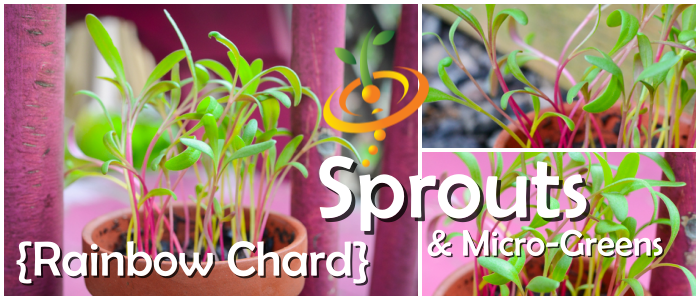
- Delicious
- Nutritious
- Beautiful colored sprouts ranging from red, pink, yellow, and orange
- Easy to grow
Sprouts/Microgreens - Lentils, Red seeds
From $199 USDUnit price /UnavailableDescription
Sprouts/Microgreens - Lentils, Green seeds
From $199 USDUnit price /UnavailableDescription
Sprouts/Microgreens - Flax (brown) seeds
From $199 USDUnit price /UnavailableDescription

Sure to be your new favorite!Very easy to grow.
Ready to consume after just a couple of days.
-
View your rewards ✨
Earn & redeem BeetCOINS™ 💰 for seriously special rewards!
Pepper (Sweet) - Purple Beauty seeds
From $199 USDUnit price /UnavailableDescription

When Peter Piper picked a peck of pickled peppers, were they Purple Beauty Peppers? If “a peck” means “a bunch,” it’s possible. This compact plant produces pecks of 3" blocky beauties, with crispy texture and subtle, mild flavor. Fruit ripens from light green to deep plum while immature, to dark red with thick skin when fully ripe. Eat fresh, pickle a peck of them, or sauté with purple beans and watch the colors change as they get piping hot.
- Very high yields
- Mild, subtle flavor
- Harvest any color
- Good for containers
SEED PLANTING TIPS
- Botanical name: Capsicum annuum
- Pepper size: Medium/3" long by 3" wide
- Plant support: Tomato cage or stake
- Depth to plant seeds: .25" deep
- Spacing between plants: 12"-18" apart
- Spacing between rows: 18"-24" apart
- Days to germinate (sprout): 7-21 days
- Germination soil temps: 75F-85F
- Soil needs: 6.0-7.0 pH
- Sun needs: Full sun
- Frost hardy: No
- Planting season: Spring, summer
- # of plants per sq. ft.: Appx. 1 plant per sq. ft.
- Days to maturity: 70-75 days
Good companion plants: Basil, Carrot, Cucumber, Eggplant, Okra, Rosemary, Sage, Squash, Tomato
All Peppers ⟐ Sweet Peppers 📚 Sweet Peppers Grow Guide Pepper (Sweet) - Orange King seeds
From $199 USDUnit price /UnavailableDescription

The Orange King Pepper has a sweet, mild nature, and rules with a lobed hand. Feast your eyes on the pageantry of fruit after fruit ripening from the regal green of a Caesar salad to the majestic orange of a Monarch butterfly. This 4"-6" thick-skinned, blocky baron is resplendent and refreshing in any salad bowl, pickle jar, or roasting pan.
- High yields
- Sweet and mild
- Crunchy and juicy
- Good fresh and cooked
SEED PLANTING TIPS
- Botanical name: Capsicum annuum
- Pepper size: Large/4"-6"
- Plant support: Tomato cage or stake
- Depth to plant seeds: .25" deep
- Spacing between plants: 18"-24" apart
- Spacing between rows: 24"-36" apart
- Days to germinate (sprout): 7-21 days
- Germination soil temps: 75F-85F
- Soil needs: 6.0-7.0 pH
- Sun needs: Full sun
- Frost hardy: No
- Planting season: Spring, summer
- # of plants per sq. ft.: Appx. 1 plant per 2 sq. ft.
- Days to maturity: 85-90 days
Good companion plants: Basil, Carrot, Cucumber, Eggplant, Okra, Rosemary, Sage, Squash, Tomato
- Plant produces good yields of orange colored sweet bell peppers. Peppers have thick walls turn from green to orange when mature. Suitable for home garden and market growers.
All Peppers ⟐ Sweet Peppers 📚 Sweet Peppers Grow Guide - From $199 USDUnit price /Unavailable
Description

- This is the most popular large-pod garden shelling pea
- Each plants produce 4"-5" pods with 6-9 large green peas inside
- It is an early producer. Does not require staking
- Easy to grow
- Great flavor and excellent quality
- Days to Maturity | 55 days
Additional DetailsPeas are high in vitamin A, vitamin C, B vitamins and lutein. Dry weight is about one-quarter protein and one-quarter sugar.
- This is the most popular large-pod garden shelling pea
Pea (Snap) - Cascadia Sugar seeds
From $199 USDUnit price /UnavailableDescription

-
The Cascadia snap pea plant produces 4" long delicious snap peas
- Very flavorful
- Excellent for stir fry
- Plant Height: 32" tall
-
Days to Maturity | 65 days
Pea Seeds | Peas are a cool season vegetable, and do best in a climate where there are two months of cool growing weather, either spring planting in the northern regions or fall planting in the warmer, southern regions. Plant seeds 4"-6" apart.
Click here for complete Pea grow guide
Additional DetailsPeas are high in vitamin A, vitamin C, B vitamins and lutein. Dry weight is about one-quarter protein and one-quarter sugar.
Follow SeedsNow.com's board Peas on Pinterest. -
The Cascadia snap pea plant produces 4" long delicious snap peas
Onion (Transplants) - Rock, Red (Intermediate Day)
From $199 USDUnit price /UnavailableDescription
Quick Overview
How to Plant Bulb OnionsRed rock is a beautiful red heirloom intermediate day onion. It has a consistent red color throughout, with a medium-to-large bulb size that is slightly flat on top.
• Intermediate Day
• Organic
• Heirloom
• Crisp, mild flavor
Onion bulbs are quite hardy and can withstand 20° F frost. They should be set out 4-6 weeks prior to the last expected frost. When your plants arrive they should appear to be quite dry. DO NOT WET THEM NOR STICK THEIR ROOTS IN WATER. Unpack them and store them in a cool, dry place until it is time to plant. They should last about 3 weeks kept this way. Do not worry that your plants seem dry. They will "shoot" new roots and new, green tops as soon as they are planted.
Onion (Transplants) - OG WALLA WALLA (Long Day)
From $199 USDUnit price /UnavailableDescription
Quick Overview
ORGANIC For generations this variety has been the pride of Washington State's onion producing region. This famous Northwest gourmet sweet onion can be grown from seed. In long and intermediate day areas where temperatures do not drop below -10 degrees. They can be planted between August 15th and September 1st and overwintered under a light mulch for harvest the following late June or early July. For colder areas it's best to raise seedlings and set out transplants in early to mid April. Not a storage onion.How to Plant Bulb Onions
Onion bulbs are quite hardy and can withstand 20° F frost. They should be set out 4-6 weeks prior to the last expected frost. When your plants arrive they should appear to be quite dry. DO NOT WET THEM NOR STICK THEIR ROOTS IN WATER. Unpack them and store them in a cool, dry place until it is time to plant. They should last about 3 weeks kept this way. Do not worry that your plants seem dry. They will "shoot" new roots and new, green tops as soon as they are planted. Be sure to specify on your order when you want your plants to arrive.
Onion (Transplants) - OG Borettana Cipollini (Long Day)
From $199 USDUnit price /UnavailableDescription
Quick Overview
A great storage onion that has made the Italian onions famous. A long day variety that is small and flat with a yellow-brown skin. An excellent, unique flavor that can be added to any dish. ORGANICHow to Plant Bulb Onions
Onion bulbs are quite hardy and can withstand 20° F frost. They should be set out 4-6 weeks prior to the last expected frost. When your plants arrive they should appear to be quite dry. DO NOT WET THEM NOR STICK THEIR ROOTS IN WATER. Unpack them and store them in a cool, dry place until it is time to plant. They should last about 3 weeks kept this way. Do not worry that your plants seem dry. They will "shoot" new roots and new, green tops as soon as they are planted. Be sure to specify on your order when you want your plants to arrive.
Onion (Transplants) - OG Blanco Duro (Long Day)
From $199 USDUnit price /UnavailableDescription
Quick Overview
Blanco Duro is a medium sized onion with pungent firm flesh. Good storage onion and tolerant to pink root disease.How to Plant Bulb Onions
Onion bulbs are quite hardy and can withstand 20° F frost. They should be set out 4-6 weeks prior to the last expected frost. When your plants arrive they should appear to be quite dry. DO NOT WET THEM NOR STICK THEIR ROOTS IN WATER. Unpack them and store them in a cool, dry place until it is time to plant. They should last about 3 weeks kept this way. Do not worry that your plants seem dry. They will "shoot" new roots and new, green tops as soon as they are planted. Be sure to specify on your order when you want your plants to arrive.
Onion (Transplants) - Grano, White (Short Day)
From $199 USDUnit price /UnavailableDescription
Quick Overview
How to Plant Bulb OnionsA beautiful white heirloom short day onion. It has a mild and crisp flavor,great to liven up any dish! This also is a favorite canning and matures in approx. 110 days.
• Short Day
• Organic
• Heirloom
• Crisp, mild flavor
Onion bulbs are quite hardy and can withstand 20° F frost. They should be set out 4-6 weeks prior to the last expected frost. When your plants arrive they should appear to be quite dry. DO NOT WET THEM NOR STICK THEIR ROOTS IN WATER. Unpack them and store them in a cool, dry place until it is time to plant. They should last about 3 weeks kept this way. Do not worry that your plants seem dry. They will "shoot" new roots and new, green tops as soon as they are planted.
- From $199 USDUnit price /Unavailable
Description
- Includes a set of three (3) Mylar bags.
- Size: 6.0" x 8.0"
- Preserve seeds for long-term storage.
- Metalized 2.2 mil provides two layers of protection from moisture and light.
- Zipper-top closure and bottom fold.
- Resealable.
- Freezer safe.
- From $199 USDUnit price /Unavailable
Description

-
The Amarillo Oro plant produces good yields of large 15 lb. golden yellow oblong melons. A pre-1870 heirloom variety from Europe
- White flesh with sweet flavor
- Grows well in the winter
- Suitable for home gardens and market growers
-
Days to Maturity | 90 days
-
Melon Seeds | Because of the long growing season, start plants indoors 4 to 5 weeks before outdoor planting time. Direct sow 4-5 seeds in a hill and then thin to the appropriate spacing.
Click here for complete Melon grow guide
-
The Amarillo Oro plant produces good yields of large 15 lb. golden yellow oblong melons. A pre-1870 heirloom variety from Europe
Leek (Transplants) - OG American Flag
From $199 USDUnit price /UnavailableDescription
Quick Overview
An excellent, fast growing leek. Under good conditions the white stem can reach 1' in length. Best for flavor and productivity in our trials of summer leeks. Shows frost resistance but will not overwinter. Tolerates frost as well as onions.
- From $199 USDUnit price /Unavailable
Description
- The neck of these gourds produce a shape that is very "swan-like"
- Ideal for decorating, painting or selling at markets
- Weighs around 3 lbs
- Can easily reach up to 15 inches in length
- Mostly green in color with prominent cream spots, and the shell usually always stays glossy when dried
- Long thin neck with wide/bulb base
- The neck of these gourds produce a shape that is very "swan-like"
- From $199 USDUnit price /Unavailable
Description
- Just as the name suggests, this style of gourd will produce a gourd that can be repurposed as large bowl when dried.
- Just as the name suggests, this style of gourd will produce a gourd that can be repurposed as large bowl when dried.
- From $199 USDUnit price /Unavailable
Description
Quick Overview
• Big bulbs!• Hard neck
• Excellent flavor
Details
How to Plant Garlic
Garlic can be planted in the spring as soon as the ground can be worked, but fall planting is recommended. Bulbs will grow bigger and more flavorful when you plant them in the fall. Plant 6 to 8 weeks before your first hard frost. In southern areas, February or March can be a better time to plant.
Key Planting Info:
- Break apart cloves from bulb but keep the papery husk on each individual clove.
- Ensure soil is well-drained with plenty of organic matter. Plant in Full Sun.
- Plant 4 inches apart & 2 inches deep, in their upright position (the wide end down and pointed end facing up).
- Come springtime, shoots will begin to emerge.
Click here for a more detailed Garlic Grow Guide -> Garlic - (Hard Neck) Ukranian Red
From $199 USDUnit price /UnavailableDescription
Quick Overview
• Easy to peel• Hard neck
• Rich, full-bodied taste
Details
Ukrainian Red is a Rocambole hardneck type garlic. Produces 7-10 large cloves that are easy to peel. Strong spicy flavor when raw, but milds with cooking. Cloves are brownish red in color.
How to Plant Garlic
Garlic can be planted in the spring as soon as the ground can be worked, but fall planting is recommended. Bulbs will grow bigger and more flavorful when you plant them in the fall. Plant 6 to 8 weeks before your first hard frost. In southern areas, February or March can be a better time to plant.
Key Planting Info:
- Break apart cloves from bulb but keep the papery husk on each individual clove.
- Ensure soil is well-drained with plenty of organic matter. Plant in Full Sun.
- Plant 4 inches apart & 2 inches deep, in their upright position (the wide end down and pointed end facing up).
- Come springtime, shoots will begin to emerge.
Click here for a more detailed Garlic Grow Guide ->Garlic - (Hard Neck) Red Grain
From $199 USDUnit price /UnavailableDescription
Quick Overview
• Organic
• Hard neck
• Spicy flavor but sweet when cooked
Details
Red Grain is a purple stipe hardneck type garlic. It produces 9-12 medium size cloves. White with red streaks throughout. Spicy in flavor, but sweet when cooked.
How to Plant Garlic
Garlic can be planted in the spring as soon as the ground can be worked, but fall planting is recommended. Bulbs will grow bigger and more flavorful when you plant them in the fall.
Key Planting Info:
- Break apart cloves from bulb but keep the papery husk on each individual clove.
- Ensure soil is well-drained with plenty of organic matter. Plant in Full Sun.
- Plant 4 inches apart & 2 inches deep, in their upright position (the wide end down and pointed end facing up).
- Come springtime, shoots will begin to emerge.
Click here for a more detailed Garlic Grow Guide ->Garlic - (Hard Neck) Purple Creole
From $199 USDUnit price /UnavailableDescription
Quick Overview
• produces dark purple colored cloves• hard neck
Details
Purple Creole is a hard neck type garlic. Best for raw eating, and produces dark purple colored cloves. Great hard neck to grow in Florida and along the Gulf Coast.
How to Plant Garlic
Garlic can be planted in the spring as soon as the ground can be worked, but fall planting is recommended. Bulbs will grow bigger and more flavorful when you plant them in the fall. Plant 6 to 8 weeks before your first hard frost. In southern areas, February or March can be a better time to plant.
Key Planting Info:
- Break apart cloves from bulb but keep the papery husk on each individual clove.
- Ensure soil is well-drained with plenty of organic matter. Plant in Full Sun.
- Plant 4 inches apart & 2 inches deep, in their upright position (the wide end down and pointed end facing up).
- Come springtime, shoots will begin to emerge.
Click here for a more detailed Garlic Grow Guide ->-
Get free seeds
🪴✨ FREE gift with every order!
Garlic - (Hard Neck) Persian Star
From $199 USDUnit price /UnavailableDescription
Quick Overview
• Organic
• Hard neck
• Mild spicy flavor
Details
Persian Star is a purple stripe harneck type garlic. Produces a medium bulb with 9-12 cloves. Bright colored cloves that are marbled purple with a white or yellow background. Flavor is a mild spicy.
How to Plant Garlic
Garlic can be planted in the spring as soon as the ground can be worked, but fall planting is recommended. Bulbs will grow bigger and more flavorful when you plant them in the fall.
Key Planting Info:
- Break apart cloves from bulb but keep the papery husk on each individual clove.
- Ensure soil is well-drained with plenty of organic matter. Plant in Full Sun.
- Plant 4 inches apart & 2 inches deep, in their upright position (the wide end down and pointed end facing up).
- Come springtime, shoots will begin to emerge.
Click here for a more detailed Garlic Grow Guide ->Garlic - (Hard Neck) Mexican Violet
From $199 USDUnit price /UnavailableDescription
Quick Overview
• VERY COLD HARDY• Hardneck
• Excellent flavor
Details
This is a brand new addition to our seed library. And we are very excited to introduce this incredible hardneck garlic to you all! Rich flavor and medium to hot heat. Containing 4 to 8 easy to peel buff-colored cloves streaked with red highlights, it has excellent yields and is VERY cold hardy. Stores for 6 months or even more. Add a couple cloves to your garden and you won't regret doing so. Super easy to grow and ready for planting now.
How to Plant Garlic
Garlic can be planted in the spring as soon as the ground can be worked, but fall planting is recommended. Bulbs will grow bigger and more flavorful when you plant them in the fall. Plant 6 to 8 weeks before your first hard frost. In southern areas, February or March can be a better time to plant.
Key Planting Info:
- Break apart cloves from bulb but keep the papery husk on each individual clove.
- Ensure soil is well-drained with plenty of organic matter. Plant in Full Sun.
- Plant 4 inches apart & 2 inches deep, in their upright position (the wide end down and pointed end facing up).
- Come springtime, shoots will begin to emerge.
Click here for a more detailed Garlic Grow Guide ->Garlic - (Hard Neck) Killarney, Red
From $199 USDUnit price /UnavailableDescription
Quick Overview
• Rocambole• Easy to peel• Hard neck
• Strong, nutty flavor
Details
We consider Killarney Red to be superior, but similar to Spanish Roja and German Red. Produces better in wet conditions. Strong and nutty flavor. Averages 7-9 easy to peel cloves. Easy to handle but loosely covered cloves result in a shorter storage life than some other varieties.
How to Plant Garlic
Garlic can be planted in the spring as soon as the ground can be worked, but fall planting is recommended. Bulbs will grow bigger and more flavorful when you plant them in the fall. Plant 6 to 8 weeks before your first hard frost. In southern areas, February or March can be a better time to plant.
Key Planting Info:
- Break apart cloves from bulb but keep the papery husk on each individual clove.
- Ensure soil is well-drained with plenty of organic matter. Plant in Full Sun.
- Plant 4 inches apart & 2 inches deep, in their upright position (the wide end down and pointed end facing up).
- Come springtime, shoots will begin to emerge.
Click here for a more detailed Garlic Grow Guide ->- From $199 USDUnit price /Unavailable
Description
- Taraxacum officinalis. Perennial.
- This strain forms lush heads of leaves that will rival your favorite lettuce. The leaves are tender, fleshy and dark green.
- The plants spread up to 2 ft and the vitamin rich leaves can be eaten raw, boiled, stir fried and used in soup.
- The roots can be eaten raw, cooked or roasted and made into a coffee substitute.
- The flowers can be used to make fritters, tea and dandelion wine.
Carrot - Amarillo Yellow (8" Long) seeds
From $199 USDUnit price /UnavailableDescription

- Amarillo Yellow heirloom carrot has an 8" long yellow root with bright yellow flesh
- Sweet flavor and extremely tender
- Easy to grow
- Grows well in containers and raised beds
- Very popular variety
-
Days to Maturity | 75 days
- Carrot Seeds | Carrots are an annual cool-season crop, half-hardy to frost and light freezes. Sow seeds evenly in a very shallow furrow, about 1/4 inch deep, and keep seeds moist so they will germinate.
Click here for complete Carrot grow guide
- Amarillo Yellow heirloom carrot has an 8" long yellow root with bright yellow flesh
Bean, Runner/Pole - Prizewinner seeds
From $199 USDUnit price /UnavailableDescription

The Prizewinner Runner Pole Bean produces a blue-ribbon show of crimson blossoms that transform into succulent, flavorful foot-long pods with speckled purple-red beans inside. Pick young for snap beans and mature for shell beans, or give them more time on stage and use them dried. A prolific producer that will win first, second, and third prize in your garden.- Easy to grow
- High yields
- Long pods up to 12"
- Eat fresh, shelled, or dried
SEED PLANTING TIPS
- Botanical name: Phaseolus coccineus
- Depth to plant seeds: 1" deep
- Spacing between plants: 5" apart
- Spacing between rows: 18"-24" apart
- Days to germinate (sprout): 8-14 days
- Germination soil temps: 70F-85F
- Soil needs: 6.0-7.0 pH
- Sun needs: Full sun
- Frost hardy: No
- Planting season: Spring, summer
- # of plants per sq. ft.: Appx. 4 plants per sq. ft.
- Days to maturity: 80-115 days
Click here to view our full Bean grow guide.
Good companion plants: Cucumber, Pea, Rosemary, Thyme, Tomato
Shop more:
BUSH BEANS
FAVA & BROAD BEANS
LIMA BEANS
POLE BEANS
Bean, Pole - Purple Podded seeds
From $199 USDUnit price /UnavailableDescription
The Purple Podded Pole Bean produces a profuse plurality of purely purple pods. View this variety vegetate vigorous verdant vines with violet developments. Stringless shells surround savory seeds.
- Easy to grow
- High yielding
- Long pods up to 7"
- Easy to harvest
SEED PLANTING TIPS
- Botanical name: Phaseolus vulgaris
- Depth to plant seeds: 1" deep
- Spacing between plants: 5" apart
- Spacing between rows: 18"-24" apart
- Days to germinate (sprout): 8-14 days
- Germination soil temps: 70F-85F
- Soil needs: 6.0-7.0 pH
- Sun needs: Full sun
- Frost hardy: No
- Planting season: Spring, summer
- # of plants per sq. ft.: Appx. 4 plants per sq. ft.
- Days to maturity: 70-75 days
Click here to view our full Bean grow guide
Good companion plants: Cucumber, Pea, Rosemary, Thyme, Tomato
Bean, Pole - Asparagus Yard-Long seeds
From $199 USDUnit price /UnavailableDescription
The Red-Seeded Asparagus Yard-Long Pole Bean says it all—very long asparagus-green and -flavored pods with red beans inside, except it grows to only half its claim. Also called Snake Bean or Chinese Long Bean, but why use half the words, too? Thank goodness it’s stringless, or you’d spend all day stringing pods in the heat that it loves. Vigorous vines can grow to 12'. For best umami flavor, harvest when 8"-12" long and the width of a pencil.
- Easy to grow
- Stringless variety
- Heat loving
- Umami flavor
SEED PLANTING TIPS
- Botanical name: Phaseolus vulgaris
- Depth to plant seeds: 1" deep
- Spacing between plants: 5" apart
- Spacing between rows: 18"-24" apart
- Days to germinate (sprout): 8-14 days
- Germination soil temps: 70F-90F
- Soil needs: 6.0-7.0 pH
- Sun needs: Full sun
- Frost hardy: No
- Planting season: Spring, summer
- # of plants per sq. ft.: Appx. 4 plants per sq. ft.
- Days to maturity: 75-85 days
Click here to view our full Bean grow guide
Good companion plants: Cucumber, Pea, Rosemary, Thyme, Tomato
- From $199 USDUnit price /Unavailable
Description
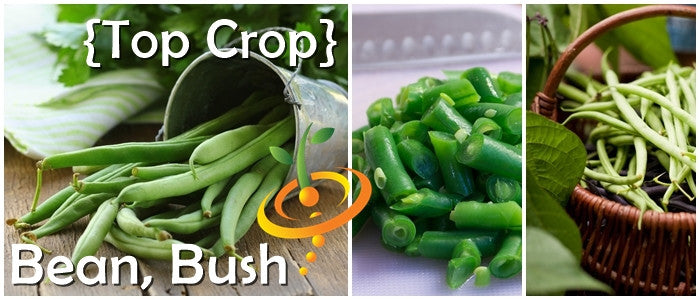
The Top Crop Bush Bean lives up to its name. This All-American Selections (AAS) winner produces high yields high up on a tall plant for easy harvesting. The 6"-7" pods are smooth, round, straight, and stringless, and they mature early in about 50 days. Also add heat tolerant to the list.
- Easy to grow
- Easy to harvest
- Heat tolerant
- Matures early—50 days
SEED PLANTING TIPS
- Botanical name: Phaseolus vulgaris
- Depth to plant seeds: 1" deep
- Spacing between plants: 4" apart
- Spacing between rows: 18"-24" apart
- Days to germinate (sprout): 5-10 days
- Germination soil temps: 70F-85F
- Soil needs: 6.0-7.0 pH
- Sun needs: Full sun
- Frost hardy: No
- Planting season: Spring, summer, fall
- # of plants per sq. ft.: Appx. 4 plants per sq. ft.
- Days to maturity: 50-55 days
Click here to view our full Bean grow guide
Good companion plants: Cucumber, Pea, Rosemary, Thyme, Tomato
Bean, Bush - Tongue of Fire seeds
From $199 USDUnit price /UnavailableDescription
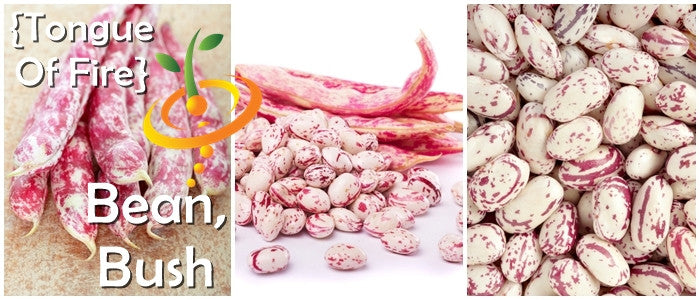
Not only does the Tongue of Fire Bush Bean have one of the best names for a vegetable, this Italian heirloom bean produces beautiful, flavorful wide cranberry streaked pods. Originally collected in Tierra del Fuego on the tip of South America, it produces 6"-7" long pods on a compact plant. Eat it young as a green bean, shell it when it matures, or let it dry and cook the large beans as you would kidney beans.
- Easy to grow
- High yielding
- Beautiful and delicious
- 6"-7" long pods
SEED PLANTING TIPS
- Botanical name: Phaseolus vulgaris
- Depth to plant seeds: 1" deep
- Spacing between plants: 4" apart
- Spacing between rows: 18"-24" apart
- Days to germinate (sprout): 5-10 days
- Germination soil temps: 70F-85F
- Soil needs: 6.0-7.0 pH
- Sun needs: Full sun
- Frost hardy: No
- Planting season: Spring, summer, fall
- # of plants per sq. ft.: Appx. 4 plants per sq. ft.
- Days to maturity: 55-90 days
Click here to view our full Bean grow guide
Good companion plants: Cucumber, Pea, Rosemary, Thyme, Tomato
- From $199 USDUnit price /Unavailable
Description
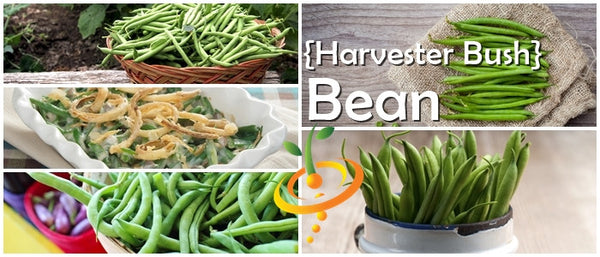
The Harvester Bush Bean grows high off the ground for easy picking. It has excellent flavor from pods that can grow up to 6" long. And you can be enjoying the juicy crunchiness in only 55 days. What’s not to like about this easy string bean?- Easy to grow
- High yielding
- Easy to harvest
- Long, flavorful pods
SEED PLANTING TIPS
- Botanical name: Phaseolus vulgaris
- Depth to plant seeds: 1" deep
- Spacing between plants: 4" apart
- Spacing between rows: 18"-24" apart
- Days to germinate (sprout): 5-10 days
- Germination soil temps: 70F-85F
- Soil needs: 6.0-7.0 pH
- Sun needs: Full sun
- Frost hardy: No
- Planting season: Spring, summer, fall
- # of plants per sq. ft.: Appx. 4 plants per sq. ft.
- Days to maturity: 50-55 days
Good companion plants: Cucumber, Pea, Rosemary, Thyme, Tomato
Bean, Bush - Edamame Soybean, Midori Giant (Soy Bean) seeds
From $199 USDUnit price /UnavailableDescription
If you enjoy going to Japanese restaurants or eating sushi, then you have probably eaten these beans cooked fresh or as tofu. The Midori Giant Edamame Soy Bean produces high yields of large 3" pods, with flavor best described as sweet, nutty, and buttery. You can cook the beans in their pods or shell them and use them fresh in any recipe.
- Easy to grow
- Large, high-yielding pods and beans
- Sweet flavor
- Grown just like green beans
SEED PLANTING TIPS
- Botanical name: Glycine max
- Depth to plant seeds: 1" deep
- Spacing between plants: 3"-4" apart
- Spacing between rows: 18"-24" apart
- Days to germinate (sprout): 5-10 days
- Germination soil temps: 65F-90F
- Soil needs: 5.5-7.5 pH
- Sun needs: Full sun
- Frost hardy: No
- Planting season: Spring, summer, fall
- # of plants per sq. ft.: Appx. 4-6 plants per sq. ft.
- Days to maturity: 80-95 days
Good companion plants: Cucumber, Pea, Rosemary, Thyme, Tomato
 VISIT THE SEED CLUB WEBSITE ➜
VISIT THE SEED CLUB WEBSITE ➜Do you like surprises? 🤩🎁✨
Join the Urban Organic Gardener's Monthly Seed Club today and receive a surprise for your garden, all-year-round!
🌱 Featured Seed Types (A - Z)
View allcontinue shopping






























































































































